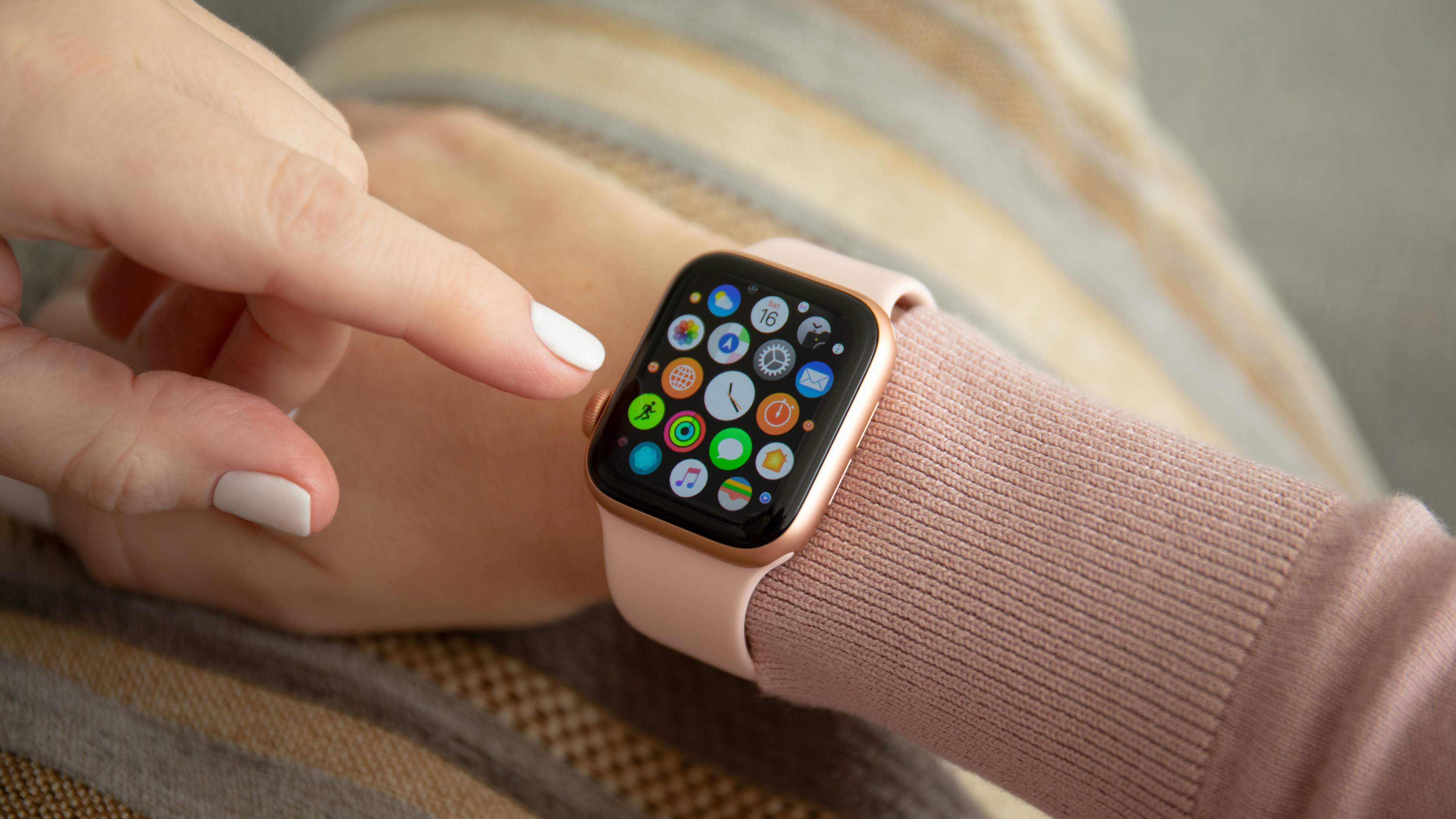Apple Watch 6 may track blood pressure without a clumsy cuff

The Apple Watch 6 is expected to get more health-tracking features than the current iterations, and a newly published patent suggests it could pack yet another capability: blood pressure monitoring.
While Apple Watches have been able to track heart rate for years, atypical blood pressure could be a sign of persistent health conditions, like hypertension, which could itself be a sign of more serious problems; among other things it may increase a person’s risk of contracting Covid-19, per CNN.
While reading blood pressure typically requires an accessory like a compression cuff, the Apple-filed patent no. 10,646,121 describes how non-invasive blood pressure reading could be possible: by using applanation tonometry, a method optometrists use to measure pressure in the eye.
The patent details what this might look like, including a series of electrodes on a wearable device (presumably, an Apple Watch), and/or capacitive nodes along the watch band.
While most of the possible configurations use capacitive pressure sensors, the patent notes that they could apply to other kinds – like piezoresistive pressure sensors that change form when pressure is applied – suggesting Apple has options for measuring pressure and the ultimate method used.
In other words, Apple is leaving itself room to decide which of these to implement, if any – which makes sense, as the patent was first filed in September 2016. While patents don’t necessarily mean features will make it into devices, its publication now – May 12, 2020 to be exact – suggests that it could appear in the Apple Watch 6.
- Apple Watch 6: everything we know
- Withings ScanWatch: another health-focused smartwatch
- Best fitness trackers: the top health-related trackers on the market
A full health-tracking complement
The Apple Watch 6 is already poised to get several upgrades to its health tracking, the biggest of which is tracking blood oxygen levels, which could help wearers detect whether they’re suffering from sleep apnea.
Sign up for breaking news, reviews, opinion, top tech deals, and more.
But combine blood oxygen tracking with heart rate monitoring and the Apple Watch 6 may be able to detect whether wearers are hyperventilating and, as analyst Jon Prosser predicted, instruct wearers to stop and calm down.
Adding blood pressure reading to the mix could allow the smartwatch to track even more conditions, and improve its ability to watch out for a user’s health.
Via Apple Insider
- Best smartwatch: the top wearables out there

David is now a mobile reporter at Cnet. Formerly Mobile Editor, US for TechRadar, he covered phones, tablets, and wearables. He still thinks the iPhone 4 is the best-looking smartphone ever made. He's most interested in technology, gaming and culture – and where they overlap and change our lives. His current beat explores how our on-the-go existence is affected by new gadgets, carrier coverage expansions, and corporate strategy shifts.